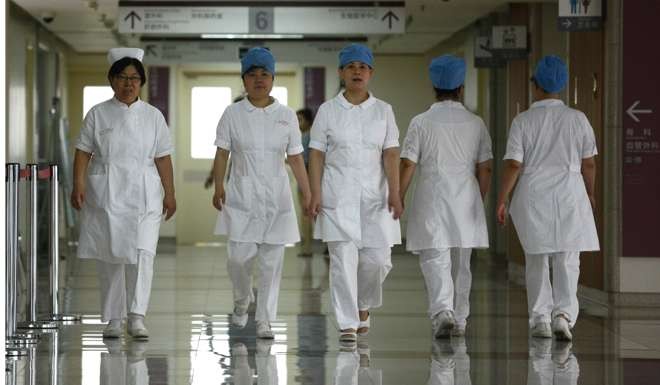
Analysis | Private Chinese speciality hospitals and clinical labs set to profit from health care reforms
Country now has highest growth rate of any elderly population in the world, with the number of people over 60 set to rise by 90pc to 240 million by 2020
Private hospitals, especially those focusing on conditions considered as “minor specialities”, such as cosmetic surgery or eye disease, are predicted to enjoy strong profit growth in the next few years, according to fresh research.
Private clinical labs will also perform well as public hospitals increasingly turn to outsourcing for clinical tests, Citi analysts led by John Yung say in a new research note.
The Chinese government has vowed to reform the country’s hospital system, with overcrowded public facilities struggling to meet fast-growing demand for quality medical care.
To support the development of the country’s private medical sector, the State Council in 2015 ordered local authorities to streamline the approval process for the setting up of private clinics, and offer preferential tax breaks to operators.
Private hospitals specialising in niche areas, including ophthalmology, dentistry and cosmetic surgery, have been the first to benefit from the favourable policies, the Citi analysts say.

“We expect the short- or mid-term opportunities for private hospitals to come from minor departments... since public hospitals will still dominate the major departments in the near term as China’s medical system transitions to include more private involvement,” Yung said.
Stock investors are already starting to spot the likely opportunities.
Shenzhen-listed Aier Eye Hospital Group, the largest ophthalmology hospital chain in China with 76 branches in 17 provinces, for instance, has been give a strong “Buy” recommendation by Citi.
Ophthalmology (the branch of medicine that deals with the anatomy, physiology and diseases of the eyeball) hospitals have recorded the highest net margins of any specialty hospitals at 13 per cent, compared with an average of six per cent, the report said.
We see the ophthalmology market, which only accounts for less than six per cent of revenue in public hospitals, to be a niche market offering more growth opportunities for private players
China’s ageing population and the ongoing massive urbanisation process has led to rising prevalence of eye diseases, it said.
The country now has the highest growth rate of any elderly population in the world, with the number of people over 60 set to rise by 90 per cent to 240 million by 2020, according to the World Health Organisation, andvision loss and other age-related conditions are expected to increase dramatically.
The Ministry of Health estimates that under current trends the number of people blinded by cataract conditions alone will more than double to 5 million by then.
“We see the ophthalmology market, which only accounts for less than six per cent of revenue in public hospitals, to be a niche market offering more growth opportunities for private players,” Yung said.
Analysts also noted a rising trend in medical services outsourcing, as policymakers seek to ease the burden of large state-owned hospitals.
Stocks of clinical labs have great growth potential with more public hospitals under budgeting pressure would opting to have their clinical diagnosis carried out by third parties.
Zhejiang DiAn Diagnostics was also recommended as a “Buy” for having a sustainable expansion model.

Private labs in China now conduct only three per cent of medical diagnosis, compared with 35 per cent in the United States, 50 per cent in Europe and 67 per cent in Japan, according to the report.
Meanwhile, the overall private hospital industry in China is still weak due to a shortage of qualified medical staff.
Although about half of the hospitals in the country are private, more than 80 per cent of medical professionals work in the public sector, which offers higher salaries and better career prospects, according to the Citi report.
Local authorities have implemented a policy allowing so-called “multiple-site practices”, meaning doctors can work part-time at private institutions. However, the policy has only received lukewarm responses.
In mid-2015, only four per cent of physicians in Beijing were treating patients at more than one place, according to the report.
The uneven distribution of medical staff has seen patients flock to public hospitals in big cities for illness ranging from colds to cancer.
With the large number of visitors, the government has to inject about 99 per cent of its medical funding to public hospitals, the report said.
“That also forms a vicious cycle, in which private hospitals are unable to invest and thus become weaker and weaker, while public hospitals increase their dominance by reinvesting their medical proceeds,” the analysts said.

